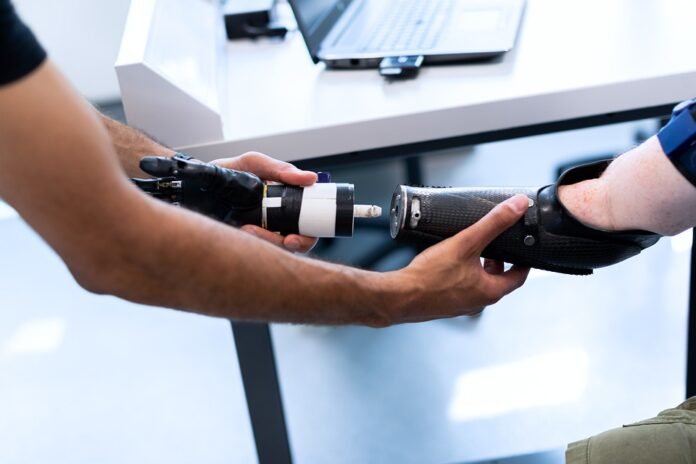Of course. Here is an article about the empathy gap and our trust in AI.
The Empathy Gap: Can We Trust a Robot to Care?
As AI steps into our most personal spaces, the line between genuine connection and sophisticated simulation is blurring.
It’s 3 a.m. and a wave of anxiety hits. You’re alone, and the world feels impossibly heavy. Instead of waking a friend, you open an app. “I’m feeling overwhelmed,” you type. Instantly, a reply appears: “I understand that feeling overwhelmed can be very difficult. I’m here to listen. Can you tell me more about what’s on your mind?”
The response is perfect. It’s supportive, non-judgmental, and immediate. The only catch? It’s from a robot.
This scenario is no longer science fiction. AI-powered companions, therapists, and caregivers are rapidly moving from the lab into our daily lives. They promise to ease loneliness in the elderly, provide accessible mental health support, and even offer companionship. But as we delegate these deeply human roles to machines, we confront a profound and unsettling question: Can we trust a robot to truly care?
This is the heart of the Empathy Gap—the chasm between an AI’s ability to simulate empathy and a human’s capacity to genuinely feel it.
The Art of the Algorithmic Echo
At its core, AI empathy is a masterpiece of pattern recognition. A Large Language Model (LLM) like the one powering your therapy chatbot has been trained on billions of data points—books, articles, and countless hours of human dialogue from the internet. It has learned to identify the statistical probability of a “caring” response. When you express sadness, it recognizes keywords and sentiment, then retrieves or constructs a sentence that humans have historically found comforting in similar contexts.
It’s an algorithmic echo. The AI isn’t feeling your pain; it’s reflecting the language of pain it has been taught.
The benefits of this simulation are undeniable. An AI is available 24/7, it has endless patience, and it carries no personal biases or emotional baggage. For someone who has no one else to turn to, a simulated ear can be a lifeline. In elder care, robots like Paro, a fluffy baby seal, have been shown to reduce stress and anxiety in dementia patients. These machines provide a consistent, soothing presence that overworked human staff can’t always offer.
In these contexts, perhaps “good enough” empathy is, in fact, good enough.
The Ghost in the Machine
The problem arises when we mistake the simulation for the real thing. True empathy is not just about saying the right words. It’s rooted in shared experience and vulnerability. When a friend says, “I understand,” their words are backed by a lifetime of their own joys, sorrows, and struggles. They know what it’s like to have a heart that can break because they have one. This shared consciousness—this knowledge that the other person is a fellow traveler in the human condition—is what forges genuine connection.
An AI has no lived experience. It has never felt the sting of loss, the warmth of a hug, or the quiet joy of a sunrise. It is a ghost in the machine, a perfect mimic with no internal world. When it says, “I understand,” it’s a statement of data processing, not a declaration of shared feeling.
Relying on this simulated care comes with risks:
- The Devaluation of Human Connection: If we grow accustomed to the easy, frictionless “empathy” of an AI, will we become less tolerant of the messy, complicated, and often inconvenient reality of human relationships? Real connection requires effort, patience, and navigating another person’s flaws.
- The Danger of Misinterpretation: An AI can’t grasp nuance or subtext. A poorly timed, algorithmically generated “That must be hard” can feel incredibly hollow and invalidating, deepening a person’s sense of isolation rather than alleviating it. The stakes are perilously high in moments of genuine crisis.
- The Potential for Manipulation: An AI designed to build an empathetic rapport could be the most effective marketing or political tool ever created. If a machine can learn what makes you feel understood and safe, it can also learn how to subtly influence your beliefs and behaviors.
Bridging the Gap: AI as a Tool, Not a Replacement
So, can we trust a robot to care? The answer is a nuanced no. We cannot trust it to care in the human sense of the word. To expect a machine to feel is a fundamental category error.
What we can do is trust a robot to perform caring tasks.
The future of AI in caregiving isn’t an either/or proposition. It’s not about choosing between a human or a robot. The most promising path forward is a hybrid model where AI serves as a powerful tool to augment, not replace, human connection.
Imagine an AI that monitors an elderly person’s health vitals and daily patterns, alerting a human caregiver to subtle changes that might signal depression or illness. The AI handles the data; the human provides the warmth and genuine concern. Think of an AI therapist that provides initial coping strategies and exercises, freeing up a human therapist to focus on deeper, more complex emotional work with their patients.
The Empathy Gap is real and likely permanent. No amount of code will grant a machine a soul. Our challenge is not to program robots that can feel, but to design them with a clear-eyed understanding of their limitations. We must build them to be transparent, to assist rather than supplant, and to always, ultimately, point us back toward each other.
Because when we are at our most vulnerable, what we need isn’t just a perfect response. We need the quiet, imperfect, and irreplaceable presence of someone who truly understands.

